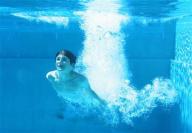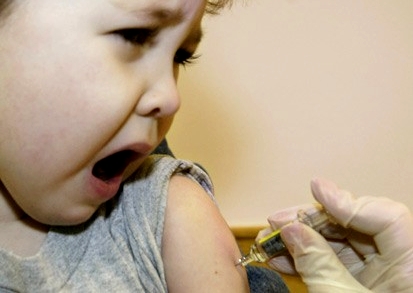
Is swimming pool chlorine fueling the allergy epidemic?
Swimming in a chlorinated pool may boost the odds that a child susceptible to asthma and allergies will develop these problems, a study released today indicates.
“These new data clearly show that by irritating the airways of swimmers chlorination products in water and air of swimming pools exert a strong additive effect on the development of asthma and respiratory allergies such as hay fever and allergic rhinitis,” Dr. Alfred Bernard, a toxicologist at the Catholic University of Louvain in Brussels, Belgium, noted in an email to Reuters Health.
“The impact of these chemicals on the respiratory health of children and adolescents appears to be much more important — at least by a factor of five — than that associated with secondhand smoke,” Bernard noted.
Taken together with his team’s prior studies, he added, “There is little doubt that pool chlorine is an important factor implicated in the epidemic of allergic diseases affecting the westernized world.”
In the current study, Bernard and colleagues compared the health of 733 adolescents, 13 to 18 years old, who swam in chlorinated outdoor and indoor pools for various amounts of time with that of 114 “control” adolescents who swam mostly in pools sanitized with a concentration of copper and silver.
In children with allergic sensitivities, swimming in chlorinated pools significantly increased the likelihood of asthma and respiratory allergies, the researchers report in the journal Pediatrics.
Among “sensitive” adolescents, the odds for hay fever were between 3.3- and 6.6-fold higher in those who swam in chlorinated pools for greater than 100 hours and the odds of allergic rhinitis were increased 2.2- to 3.5-fold among those who logged more than 1000 hours of chlorinated pool time.
For example, among children and teens who swam in chlorinated pools for 100-500 lifetime hours, 22 children out of 369 (6.0%) had current asthma, compared with those who had spent less than 100 hours (2 of 144, 1.8%). The proportions with asthma rose with longer exposure, to 14 out of 221 (6.4%) who had been swimming for 500-1000 hours, and 17 out of 143 (11.9%) who swam for more than 1000 hours.
The risk of asthma and allergy was not influenced by swimming in copper-silver sanitized pools and children without allergic tendencies were not at increased risk of developing allergies.
“The only plausible explanation” for these observations, the researchers argue, is that the chlorine-based toxic chemicals in the water or hovering in the air at the pool surface cause changes in the airway and promote the development of allergic diseases.
“It is probably not by chance,” Bernard told Reuters Health, “that countries with the highest prevalence of asthma and respiratory allergies are also those where swimming pools are the most popular.”
The current findings, he and colleagues conclude, “reinforce” the need for further study on the issue and to enforce regulations concerning the levels of these chemicals in water and air of swimming pools.
swimming pool chlorine, swimming pool chlorine Health, swimming pool chlorine Health Latest, swimming pool chlorine Health Information, swimming pool chlorine Health information, swimming pool chlorineHealth Photo,Exercising for Weight Health photo, swimming pool chlorine Health Latest, swimming pool chlorineHealth latest, Exercising for Weight Health Story, Healthy Minnesota Health story, swimming pool chlorine Video, swimming pool chlorine video, swimming pool chlorine Health History, swimming pool chlorine Health history, swimming pool chlorineover Picture, history, swimming pool chlorine Asia, Healthy Minnesota asia, swimming pool chlorine Gallery, Exercising for Weight gallery, swimming pool chlorine Photo Gallery, Healthy Minnesota photo gallery, swimming pool chlorine Picture, swimming pool chlorine picture, swimming pool chlorine Web, Malaysia Health, web Health, web Health picture, video photo, video surgery, gallery, laparoscopy, virus, flu, drug, video, Health Health, calories, photo, nutrition, health video, symptoms, cancer, medical, beating, diet, physical, Training, organic, gym, blister, exercise, weightloss, surgery, spiritual, eating, tips, skin, operation, bf1




